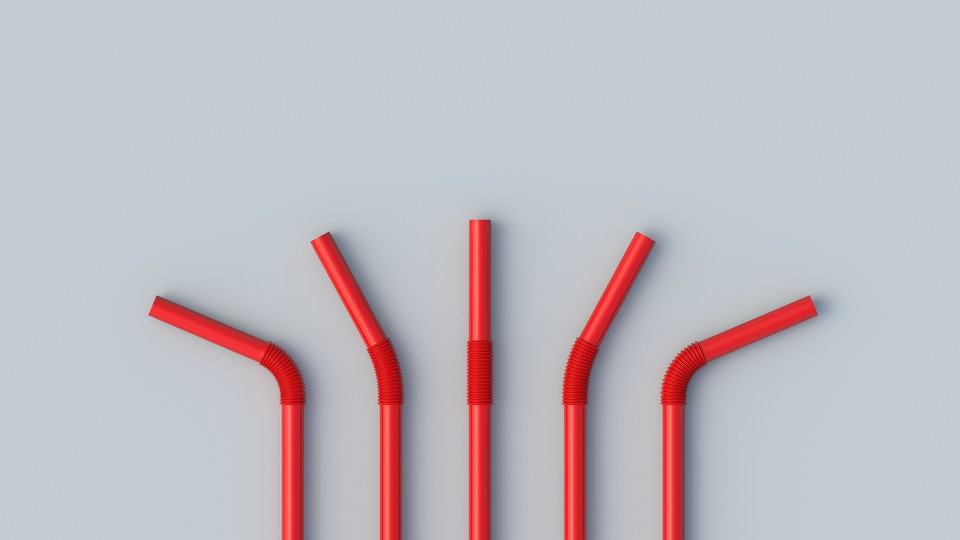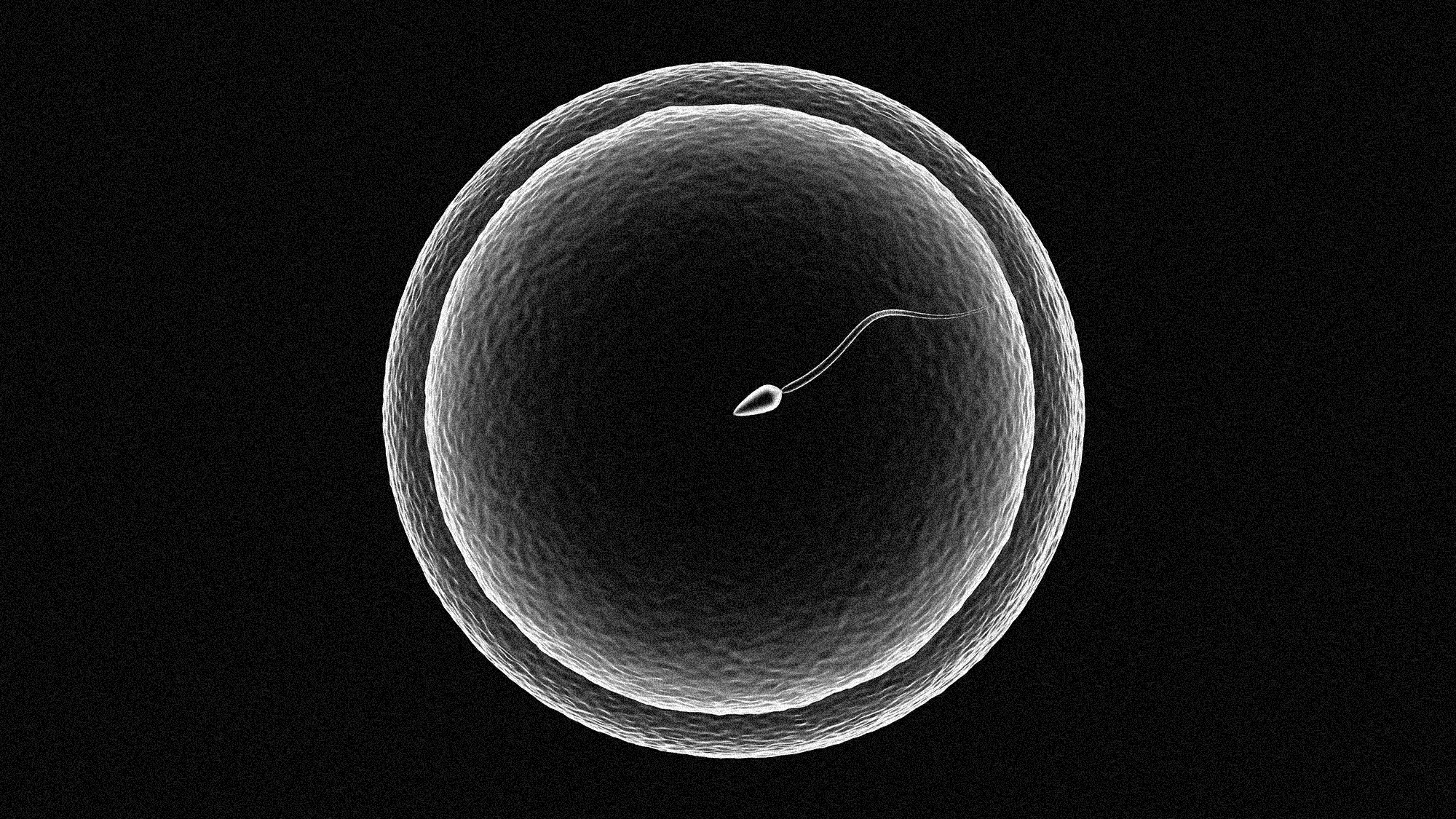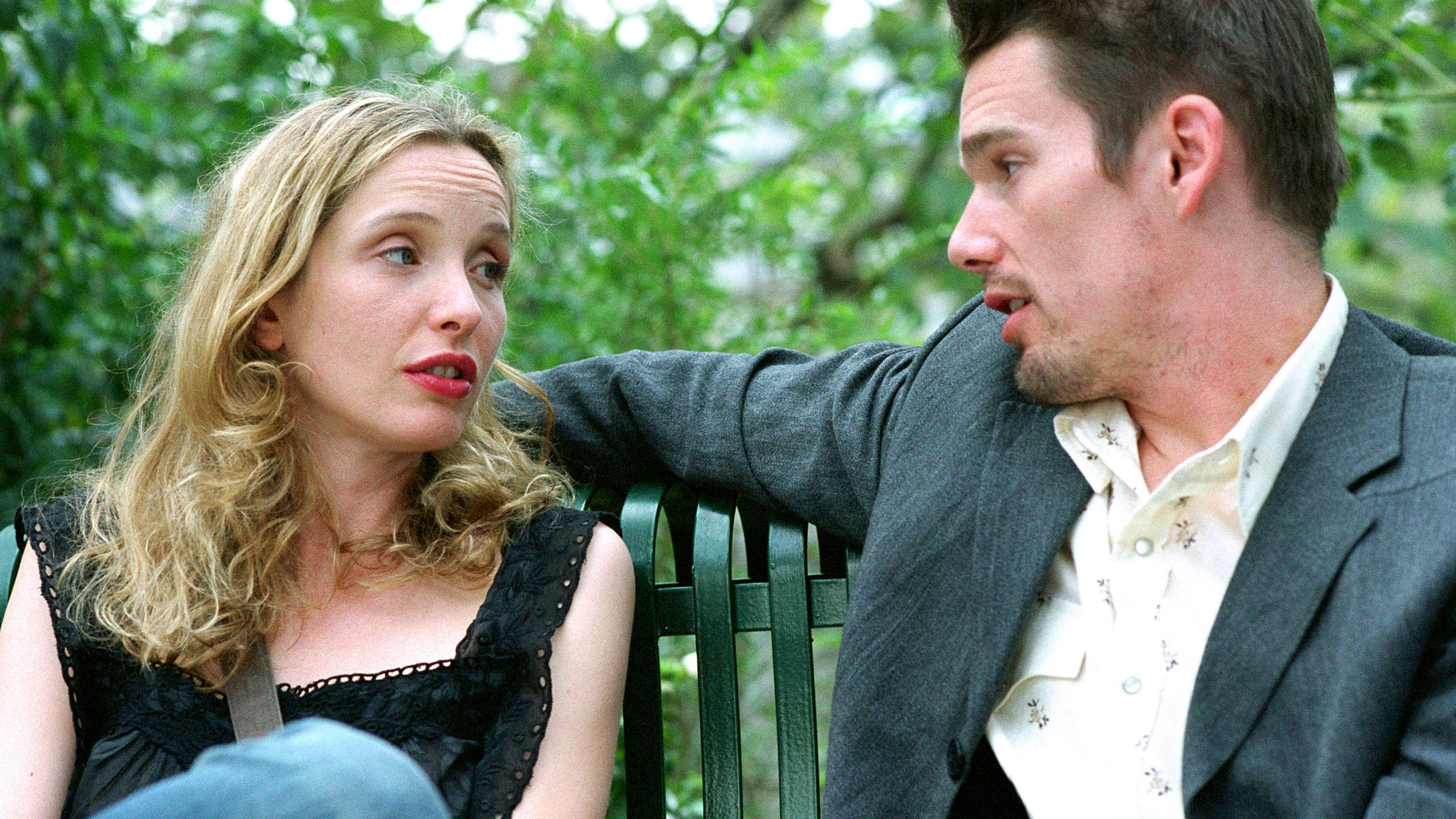The Straw Wars
6 min read
This is an edition of The Atlantic Daily, a newsletter that guides you through the biggest stories of the day, helps you discover new ideas, and recommends the best in culture. Sign up for it here.
For something so small and hollow, the drinking straw has become quite a potent symbol over the years.
First, here are four new stories from The Atlantic:
- How much worse would a bird-flu pandemic be?
- Ruth Bader Biden
- Confessions of an Ozempic-taker
- This is what it looks like when AI eats the world.
“Soaking Up the Era”
In the first few pages of Nicholson Baker’s 1988 novel, The Mezzanine, the narrator recounts a vexing plastic-straw encounter. “I stared in disbelief the first time a straw rose up from my can of soda and hung out over the table,” making it impossible to eat pizza, read a book, and drink soda at the same time, he recalls. This problem has plagued him, he says, since “all the major straw vendors switched from paper to plastic straws.”
My most immediate question upon reading this passage recently was: What? Vendors moved from paper straws to plastic ones in the second half of the 20th century? I had always assumed—to the extent that I’d given the matter any thought—that paper straws were a newer product, made popular in response to bans on plastic straws in the 2010s. I had a lot to learn.
Over the years, it turns out, straws made of various materials have served as potent symbols, and accelerators, of cultural change in America. As Alexis Madrigal argued in The Atlantic in 2018, “The straw has always been dragged along by the currents of history, soaking up the era, shaping not its direction, but its texture.” Madrigal explains that early drinking straws in 19th-century America were literal pieces of straw, rye stalks that people used to suck up liquid. Soon, versions of straws made of glass, and then paper, were developed. When industrialization spread in the late-19th and early-20th centuries, he writes, paper straws became important public-health tools that prevented workers in crowded factories from putting their lips on the same cups.
Around that time, soda fountains were flourishing as a space for young ladies in cities to go out and socialize without frequenting saloons—and to drink soft drinks through straws. In later decades, the rise of the malted milkshake and the spread of fast-food chains led to the wide proliferation of the straw and innovation in its materials. By the 1970s and ’80s, as so much in America was becoming plastic, the plastic straw had become ubiquitous.
This all brings us to 2017, when the environmentalist campaign to #stopsucking was launched. The plastic straw quickly became an object lesson in how environmental activism can gain traction—and, in the eyes of some critics, fall short. In the late 2010s, businesses’ and municipalities’ efforts to ban plastic straws quickly met backlash from conservatives (who held up the bans as evidence of liberal overreach) and from disability advocates (who noted that straws are crucial tools for many people). But major corporations and several states did move to limit plastic-straw usage, which raised awareness about the dangers of plastic. Straws also became an unlikely avatar of debates over the role that consumers’ personal choices should—or shouldn’t—play in tackling the climate crisis. Some argued that a focus on straws draws attention away from more effective tools for mitigating the damage of climate change, and from the corporations responsible for the bulk of pollution.
Now many environmental activists are looking toward more ambitious climate targets, such as banning all single-use plastic products. And at the establishments I frequent in New York, I’m witnessing a sort of straw détente: Some have signs offering a plastic straw if you ask for it; some give out sippy-cup lids; others opt for brown, opaque straw varieties (many are made of sugarcane or questionably compostable bioplastics) or paper straws. The global paper-straw sector is now, by some estimates, worth billions of dollars. But, this being the straw, things are still not simple. In addition to their tendency to become mushy while someone is midway through a cocktail, and their inability to successfully puncture a lid, many paper straws are not actually compostable or recyclable; they can also contain more “forever chemicals” than their plastic counterparts do, according to a study published last year (one of the researchers noted that consumers should not panic about individual risk).
The straw has faced criticism both profound and absurd over the course of its life: Some TikTok users are apparently concerned about straw-sucking-induced wrinkle lines. But to me, the most deliciously overdramatic straw complaint—one that stuck out to Madrigal too—comes from Baker’s soda-drinking narrator: “How could the straw engineers have made so elementary a mistake, designing a straw that weighed less than the sugar-water in which it was intended to stand,” he sputters. “Madness!”
Related:
- Disposable America (From 2018)
- The case against paper straws
Today’s News
- House Speaker Mike Johnson appointed pro-Trump Representatives Scott Perry and Ronny Jackson yesterday to the House Intelligence Committee, which handles classified information and oversees intelligence agencies. According to the January 6 House committee, Perry played a role in efforts to overturn the 2020 presidential-election results.
- Eight of the nine Supreme Court justices’ 2023 financial disclosures have been released. Justice Samuel Alito received an extension to file his report.
- The prosecution rested its case in Hunter Biden’s criminal trial in Delaware. The defense called his daughter to the stand, and she testified about his rehabilitation efforts.
Dispatches
- The Books Briefing: Adam Higginbotham’s new book on the Challenger disaster adds depth to a well-known story, Emma Sarappo writes.
- Atlantic Intelligence: Experts were worried about an AI misinformation crisis during India’s recent national election, but that didn’t exactly happen, Saahil Desai writes. Instead, the election showed a stranger possible future for AI’s use in politics.
Explore all of our newsletters here.
Evening Read

How Can You Part With the Embryo That Could Have Been Your Child?
By Melissa Jeltsen
One of the first documents patients sign when starting in vitro fertilization asks them to consider the very end of their treatment: What would they like to do with extra embryos, if they have any? The options generally include disposing of them, donating them to science, giving them to another patient, or keeping them in storage, for a cost.
The idea that one might end up with surplus embryos can seem like a distant wish for those just beginning IVF … But with advances in reproductive technology, many patients end up with extra embryos after this process is over. Deciding what to do with the leftovers can be surprisingly emotional and morally thorny; even those who are not religious or who support reproductive autonomy might still feel a sense of responsibility for their embryos.
Read the full article.
More From The Atlantic
- Josh Barro: New York’s governor is inept.
- If only people actually believed these Trump-as-Jesus memes.
Culture Break

Watch. These 23 movies, compiled in 2022 by our critic, are undeniable crowd-pleasers that were underappreciated by the Academy.
Read.The Playbook, James Shapiro’s new book, sees the reactionary response to a New Deal–era arts initiative as a precursor to today’s culture wars.
Play our daily crossword.
P.S.
The battle over plastic straws was fueled in part by a surprising figure: a then-9-year-old boy who estimated that Americans used some 500 million straws a day. As The New York Times reported in 2018, “The number this fourth grader came up with in 2011, as part of a personal environmental conservation campaign, has proved surprisingly durable, working its way to the heart of the debate over plastic straws.”
— Lora
Stephanie Bai contributed to this newsletter.
When you buy a book using a link in this newsletter, we receive a commission. Thank you for supporting The Atlantic.



